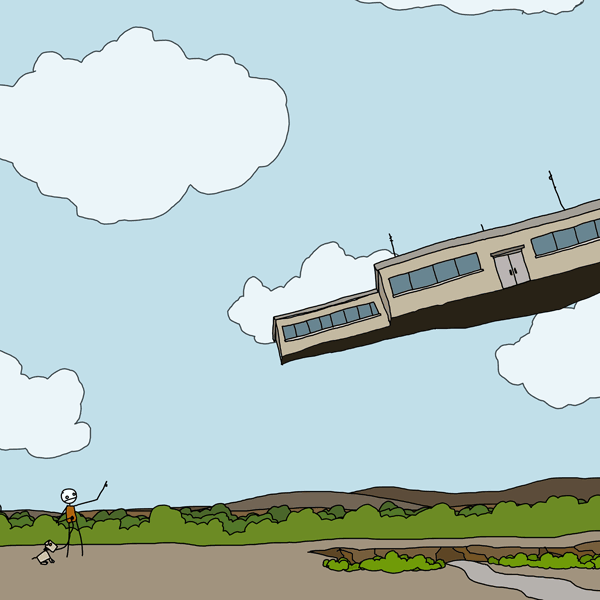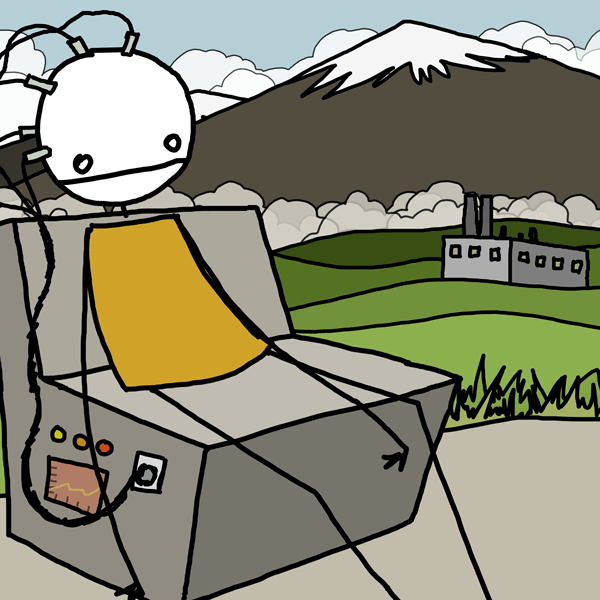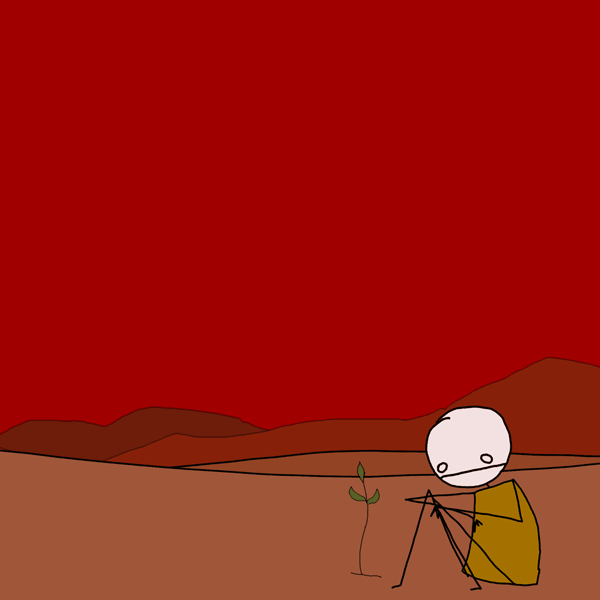Tadao Ando - Seven Interviews

Excerpted from Seven Interviews With Tadao Ando
p. 54
TA: Well, generally speaking Osaka, where I have spent most of my life—might be seen as on the periphery of Japanese culture. It is the last place someone would think of as cultural in the sense of fine modern art. The place where you are born and raised, and the time when you are born and spend most of your time are critical for people. By being born in…and being raised in this peripheral place, I think I carry this unconscious scar or need to be deeply cultural…In my late teens, I wanted to affect culture, even if I was not born to it, I sometimes have this feeling that I am coming from someplace very low and am wanting to go beyond it.
p. 55
TA: …the area of Kyoto, Nara, and Osaka where I come from was once the center of ancient Japan. It has what is called a tomb culture, a tomb civilization. Of course, tombs exist all over the country, but there is a dense concentration of tombs around Nara and Osaka. When you are young, when you are growing up, your body responds to the environment, the physical environment as well as the spiritual environment. In my case, I was always aware of the great tombs surrounding us. These tombs have a very powerful presence—a place carved into nature that suggests a mediation on the past, the present, and the future. I think what you are suggesting, and it may be true, is that this tomb environment has affected me. Also, I value the instinctive synthesized wisdom and inborn abilities of native people and traditions. I prefer trying to solve difficult problems by referring back to native knowledge and solutions rather than consulting books of new theory.
TA: It seems to me that philosophers, poets, people who spend much of their life thinking about basic things, deep down in their mental state they have what I would call a scar. It is something deep within themselves or their past that provokes them to think of life in a different way. This scar gives them the will to fight or the strength to express themselves.
p. 43
TA:
Yes, probably, and Le Corbusier, as well, but I can’t tell you exactly how. I’m sure there is something there that relates, but is not something that has to do with style. It has to do with imparting a sense of this spatial order and its relationship to nature. Even though his sketches can be very colorful, the color does not overtake the sense of order. This sounds philosophically complicated, but it is very basic. It is at the very center of the art of architecture. It is this sense of order that I want to pursue in my work.
p. 43
Michael Auping: How long have you known of Louis Kahn’s work, and do you remember the first time you experienced a building by Kahn?
TA: I have known of Louis Kahn’s work for a long time. I have seen his buildings in Philadelphia; the Salk Institute in La Jolla, California; and the Indian Institute of Management in Ahmedabad
MA: What do you think is his most important achievement?
TA: Without a doubt the Kimbell Art Museum.
MA: Why is that?
TA: First of all, it is a very elegant building, but more importantly it provides a sense of order that very few architects of the twentieth century have achieved. I think that architectural space creates consciousness, an awareness of a larger universal rhythm an balance The quality of order that Kahn’s buildings capture something about the natural balance of the building. Even though the drawings are often very quickly done, you can feel it just in the way the marks are placed on the page. The basic thick marks that he makes have a strong rhythmic quality that gets translated into his buildings.
Buildings project, particularly with the Kimbell, allows the viewer to sense this balance. We are then allowed to measure ourselves against is, to discover our own balance, to discover our own consciousness within this larger order. When I look at Kahn’s work, I think of ancient Greek architecture. If you look at Kahn’s sketches, you see the sense of order within Greek architecture. I remember his sketches of the Parthenon being very expressive.
MA: Do you think your appreciation of Kahn’s drawings has influenced the way you draw?
TA: Yes, probably, and Le Corbusier, as well, but I can’t tell you exactly how. I’m sure there is something there that relates, but is not something that has to do with style. It has to do with imparting a sense of this spatial order and its relationship to nature. Even though his sketches can be very colorful, the color does not overtake the sense of order. This sounds philosophically complicated, but it is very basic. It is at the very center of the art of architecture. It is this sense of order that I want to pursue in my work.

p 43 vertical vs. horizontal, cruciform shape, order, nature, Louis Kahn, Le Corbusier
p 44
“However I do think that today cities are so complicated and dense that there is a real need to create spaces that suggest solitude and spiritual freedom.”
p.45 to make something distinct and solid [distinct from landscape] but integrated and not an artificial addition
p.47 the square, the circle, the X, the ellipse (placed in entrance contrasted to square/grid elements in order to cause person to stop and contemplate, to be nudged slightly, away from complete comfort)
p.49 importance of roof, horizontal and vertical lines
p. 51 the importance of darkness and shadow inside (and outside) a building, indirect light, Ando’s childhood home in Osaka and the traditional Japanese engawa space that surrounds a building.
p.53
“In my opinion, the darkness creates the opportunity to think and contemplate.”
MA: In a Christian society, light is always privileged over darkness, darkness having an essentially evil connotation. Are you suggesting that darkness may even be more important to the contemplative, creative process?
TA: Yes, I think so. Of course, the balance if dark and light can shift depending on the context. But areas of darkness are critical, and I think they relate to deep metaphorical levels of creation. It seems to me that philosophers, poets, people who spend much of their life thinking about basic things, deep down in their mental state they have what I would call a scar. It is something deep within themselves or their past that provokes tem to think of life in a different way. This scar gives them the will to fight or the strength to express themselves. Right now I am thinking about the architect Daniel Libeskind. He is Jewish and he seems to live with a scar of being Jewish, which is the scar of the difficult history of the Jews. That seems to be the imagery that drives his creativity. And there are important areas of darkness in his buildings.
MA: The next obvious question, of course, is how would you describe the scar that is expressed in your work?
TA: Well, generally speaking, Osaka—where I have spent most of my life—might be seen as on the periphery of Japanese culture. It is the last place someone would think of as cultural in the sense of fine modern art. The place where you are born and raised, and the time when you are born and spend most of your time are critical for people. By being born in 1941, when the Pacific War opened, and being raised in this peripheral place, I think I carry this unconscious scar or need to be deeply cultural. There were so many who suffered from poverty or destitution around me from 1945 to 1965. I understood as a young man that living is no an easy thing, that life can be severe. In my late teens, I wanted to affect culture, even if I was not born to it, I sometimes have this feeling that I am coming from someplace very low and am wanting to go beyond it. Perhaps Mr. Isozaki could understand what I am saying. He was born in Ohita, in Kyushu Island; he was also born in one of the peripheral places. If we can continue the metaphor of dark and light, I would say that we do not come from the bright light of a place like Tokyo, where you are in the center of the light of the cultural. We come from the country. We come from the shadows of the cultural scene. On the other hand, you have an architect like Mr. Maki, who was born and raised in a wealthy family in Tokyo. His work is lighter, you might say more dazzling, in appearance. He doesn’t seem to carry any visible scar.
MA: Having known you for a few years now, and having visited Japan a number of times, it’s a little difficult for me to see you in Tokyo, even though you now hold the Chair in Architecture at the University of Tokyo. You seem, I don’t know…more ancient. I think of you Chikatsu Asuka Historical Museum outside Osaka. I think it is one of your greatest works, even more so than the highly acclaimed Church of the Light and Church on the Water. They are all unique buildings, but the Chikatsu Historical Museum literally took my breath away. Somehow I don’t think an urbane, postmodern architect could design such a museum.
TA: Ancient! [laughs] I am not so old, but the area of Kyoto, Nara, and Osaka where I come from was once the center of ancient Japan. It has what is called a tomb culture, a tomb civilization. Of course, tombs exist all over the country, but there is a dense concentration of tombs around Nara and Osaka. When you are young, when you are growing up, your body responds to the environment, the physical environment as well as the spiritual environment. In my case, I was always aware of the great tombs surrounding us. These tombs have a very powerful presence—a place carved into nature that suggests a mediation on the past, the present, and the future. I think what you are suggesting, and it may be true, is that this tomb environment has affected me. Also, I value the instinctive synthesized wisdom and inborn abilities of native people and traditions. I prefer trying to solve difficult problems by referring back to native knowledge and solutions rather than consulting books of new theory.
p.57 buildings should offer security, sense of possibility / Ando not interested in doing airports because they are not destinations but generally points of transition.
p.58 anxiety over making new building / Mies van der Rohe’s understanding of stone and glass
p.60
“I think what architects always hope they can do is create both a reality and a fiction simultaneously.”
p.61 when the walls first come out of the ground
p.63
“Much of the power of this building will be on the inside.”
p.65 the surrounding context, the roof, the pavilion, the street, the pond and Louis Kahn
p.66 fiction versus function
“As you walk through this museum, the spaces will change in size and sometimes in shape and the light will change. As you go through the building, the scenes will change, the mood will change, the fiction will change. If they are subtle enough then you will not think of it as a fiction or a story, you will just live with it as reality.”
p.67
“The physical presence of architecture is the foundation of my sensibility.”
p.69 not the only way to respect art
p.70 TA rips Frank Gehry a new one, tactfully.
p.71
“In boxing, once you let your guard down, it’s over.”
p.73
“A wall must assert its presence in terms of its form and materiality, to make you understand that it has its own power or presence, but it must do so in a way that inspires and does not force or intimidate.
p. 74
“It is important to begin with the site and establish what type of form the site can accommodate, and then create a form in which the spaces function for the client. In that sense, you begin from the outside in, but you have to move in both directions at the same time to create the dialogue between the inside and the outside. In this Fort Worth building, we have glass walls on the outside and concrete walls on the inside, which I think will make people think about different ways of opening and enclosing space.

p. 78
“If the surface does not speak too loud, then people will begin to think about themselves. They bring the meaning to the space.”
p. 83
“I’m not sure it’s appropriate to connect the September 11th tragedy directly to the physical issue of architecture. It seems hasty to jump to the conclusion that protection and security is the most important issue for buildings. The strongest buildings or even a fortress could not survive the attack of a jet airplane full of fuel. That tragedy provokes broader questions. We can never tolerate terrorism but we have to think about these tragic events more fundamentally. All I can do as an architect is consider the diversity of people on this planet and how architecture can help bring them together; not just as a meeting place, but a space of inspiration. As an architect, this is all I can do—to create a dialogue between diverse cultures, histories, and values. We can learn so much from each other and our past.”
Tadao Ando
Home


